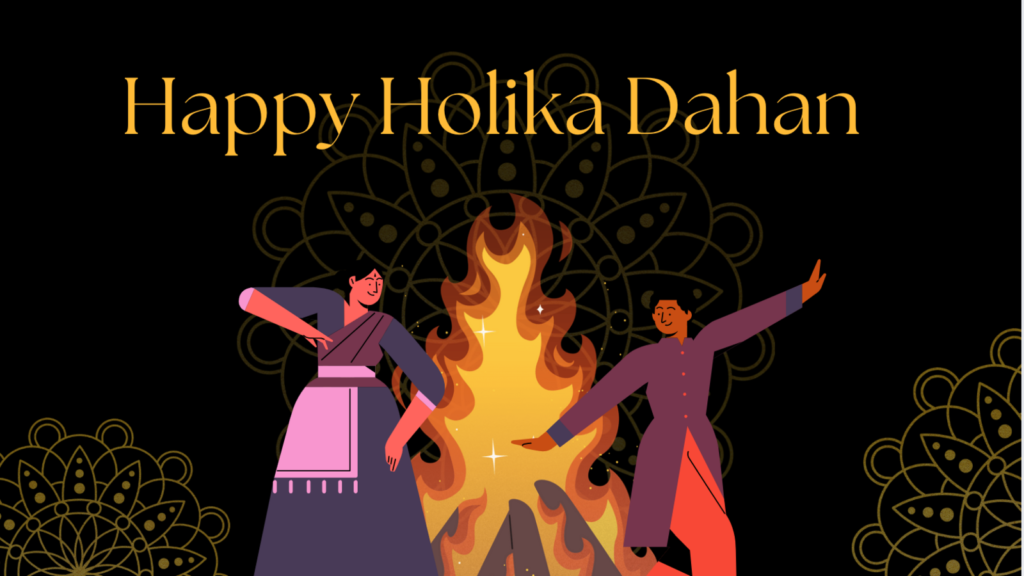
Holika Dahan, the vibrant and symbolic festival that marks the triumph of good over evil, is celebrated with enthusiasm across India. While the essence of the festival remains the same, the timing and traditions associated with Holika Dahan vary across different regions. This guide delves into the when, why, and how of Holika Dahan, unraveling the rich tapestry of customs tied to this auspicious event.
Table of Contents
- The Significance of Holika Dahan
- The Traditional Timing of Holika Dahan
- Why Does the Date Vary Each Year?
- Regional Variations in Celebration
- North India
- Western India
- Central India
- South India
- Eastern India
- North India
- Cultural Rituals and Local Beliefs
- Holika Dahan vs. Holi: Understanding the Difference
- Conclusion: Unity in Diversity
1. The Significance of Holika Dahan
Holika Dahan commemorates the legendary tale of Prahlad and Holika, symbolizing the victory of devotion and righteousness over arrogance and evil. It’s celebrated on the full moon night (Purnima) of the Hindu month Phalguna, usually falling in February or March.
2. The Traditional Timing of Holika Dahan
Traditionally, Holika Dahan is performed after sunset during the Pradosh Kaal, especially when Bhadra (an inauspicious time) is over. This ensures that the ritual is done at an auspicious moment according to the Hindu calendar.
3. Why Does the Date Vary Each Year?
The celebration is based on the lunar calendar, not the Gregorian one. Hence, the exact date changes annually. The festival occurs on Phalguna Purnima, and astrologers determine the best time based on the muhurta (auspicious time).
4. Regional Variations in Celebration
Though the theme is common, the customs and timing vary from one region to another. Here’s how different parts of India mark this event:
North India
In states like Uttar Pradesh, Punjab, Haryana, and Bihar, Holika Dahan is a grand affair. Huge bonfires are lit in community spaces on Phalguna Purnima night, followed by Holi celebrations the next day.
Western India
Rajasthan and Gujarat add a royal touch to Holika Dahan. In tribal areas, dances and traditional rituals accompany the burning of Holika. Gujarat also sees Holika Dahan performed earlier in the evening compared to other states.
Central India
In Madhya Pradesh, Holika Dahan is deeply rooted in rural traditions. Villages organize pujas around the bonfire, and folk songs narrating the story of Prahlad are sung.
South India
While Holika Dahan is not a major festival in most parts of South India, in Andhra Pradesh and Telangana, Kamudu pyre is lit, which is similar in concept to Holika Dahan.
Eastern India
In West Bengal and Odisha, Holika Dahan coincides with Dol Jatra, a celebration of Lord Krishna. The rituals blend Holika’s mythology with Vaishnavite traditions.
5. Cultural Rituals and Local Beliefs
- In some regions, people walk around the fire seven times, seeking protection and prosperity.
- In tribal areas, natural materials like cow dung cakes, neem, and dry wood are used to symbolize purification.
- Families often collect ashes the next morning and apply them on foreheads as a sign of blessings.
6. Holika Dahan vs. Holi: Understanding the Difference
While Holika Dahan is the ritualistic beginning, Holi is the colorful celebration that follows the next day. Holika Dahan represents cleansing and destruction of evil, while Holi embodies joy, love, and the arrival of spring.
7. Conclusion: Unity in Diversity
Holika Dahan is more than just a ritual—it’s a symbol of hope, unity, and renewal. Despite the diverse traditions across India, the festival connects communities with its universal message: that light will always triumph over darkness.
No matter where you are in India, the crackling flames of Holika Dahan serve as a timeless reminder that goodness will always rise, and faith will always win.

